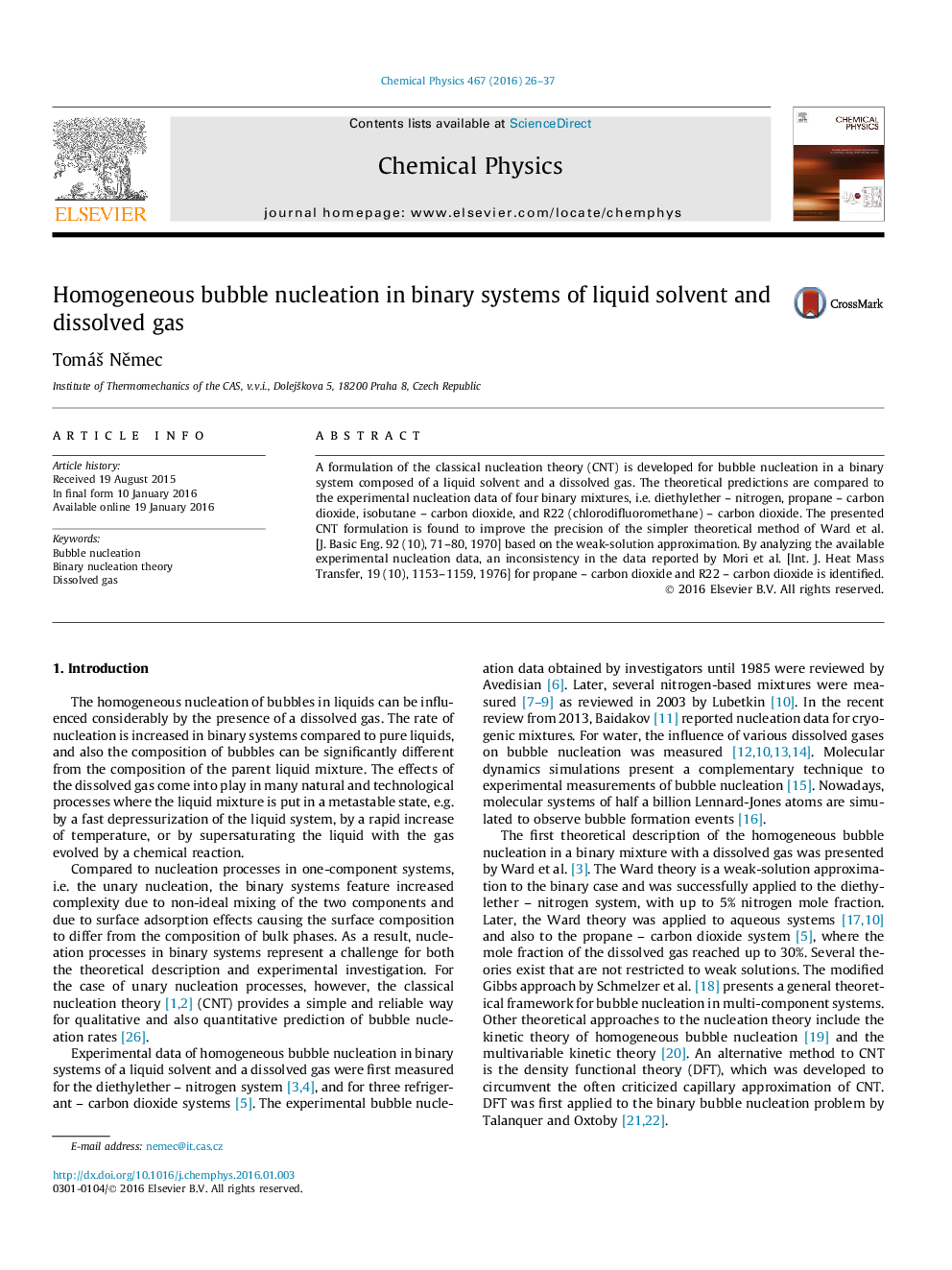| Article ID | Journal | Published Year | Pages | File Type |
|---|---|---|---|---|
| 5373123 | Chemical Physics | 2016 | 12 Pages |
â¢Classical nucleation theory is formulated for bubble nucleation in binary systems.â¢Describes mixtures of a liquid solvent and a dissolved gas at high concentration.â¢Predictions of the nucleation rate are compared to binary bubble nucleation data.â¢Inconsistency in experimental data for propane/CO2 and R22/CO2 is identified.
A formulation of the classical nucleation theory (CNT) is developed for bubble nucleation in a binary system composed of a liquid solvent and a dissolved gas. The theoretical predictions are compared to the experimental nucleation data of four binary mixtures, i.e. diethylether - nitrogen, propane - carbon dioxide, isobutane - carbon dioxide, and R22 (chlorodifluoromethane) - carbon dioxide. The presented CNT formulation is found to improve the precision of the simpler theoretical method of Ward et al. [J. Basic Eng. 92 (10), 71-80, 1970] based on the weak-solution approximation. By analyzing the available experimental nucleation data, an inconsistency in the data reported by Mori et al. [Int. J. Heat Mass Transfer, 19 (10), 1153-1159, 1976] for propane - carbon dioxide and R22 - carbon dioxide is identified.
Graphical abstractDownload high-res image (153KB)Download full-size image
